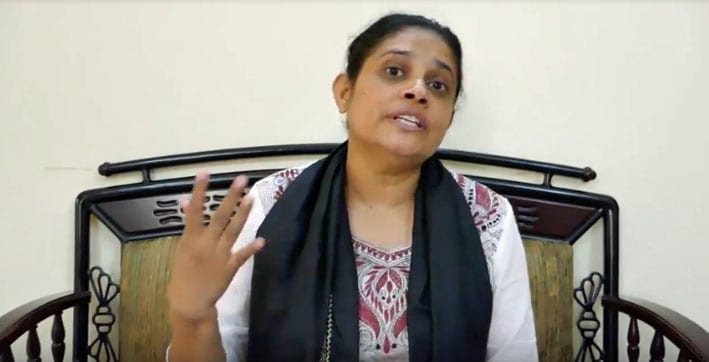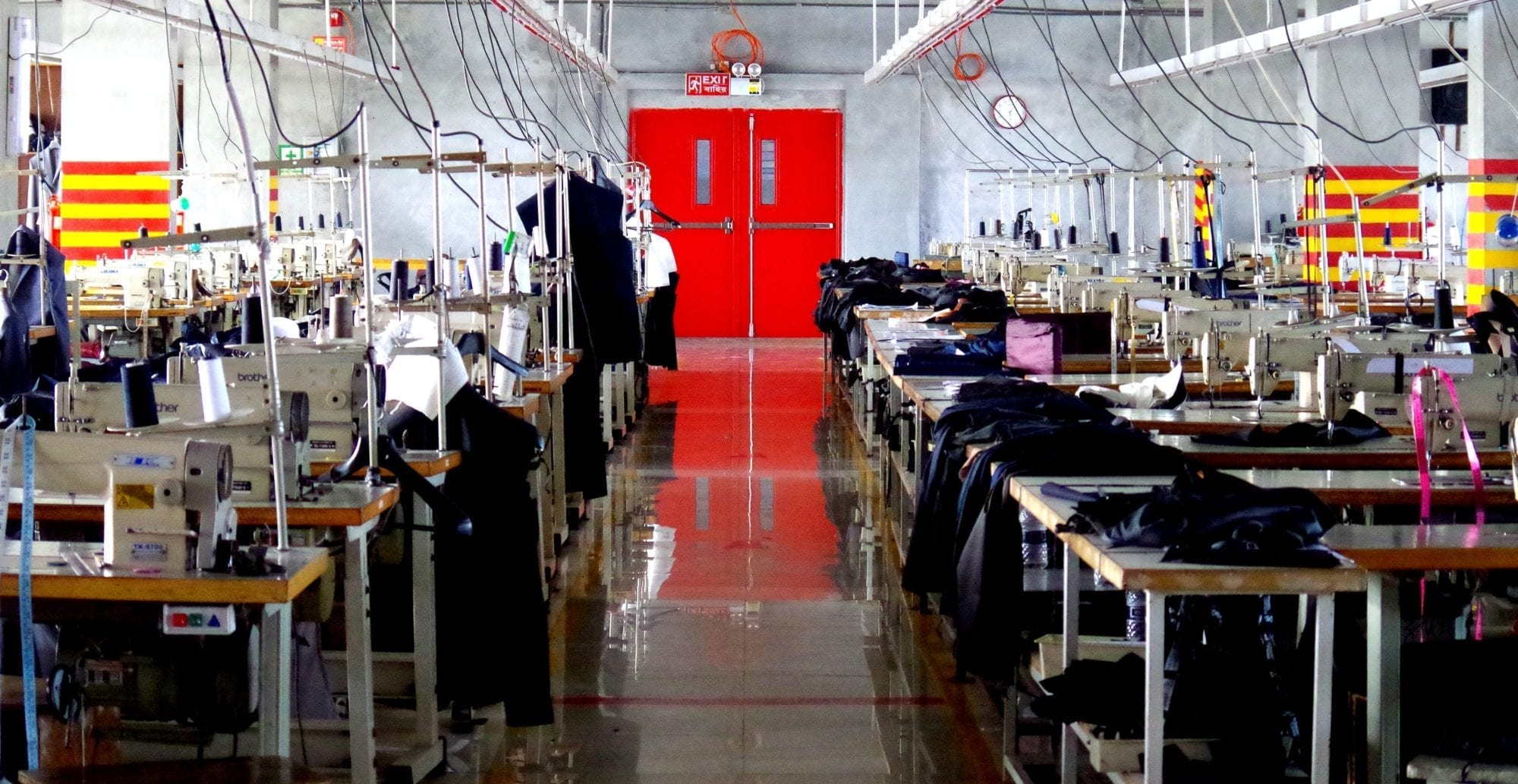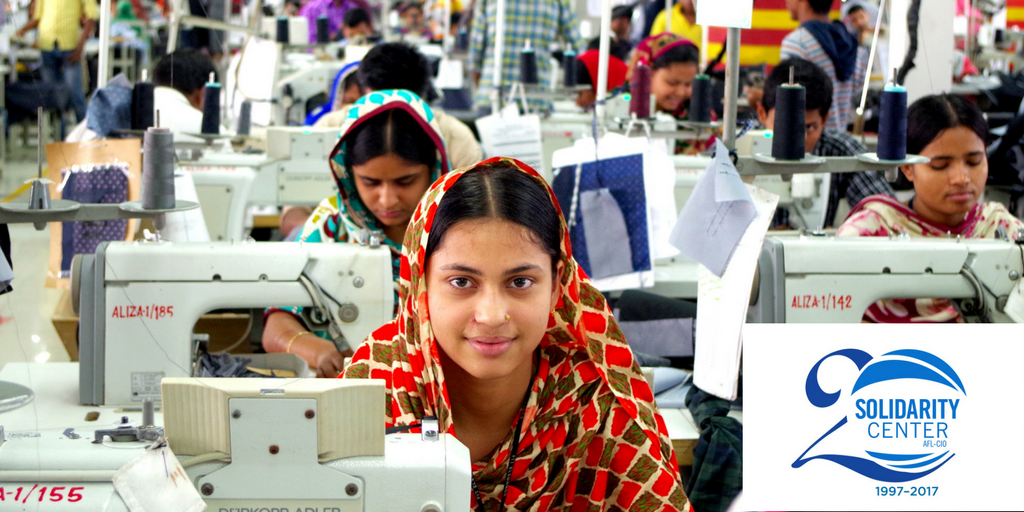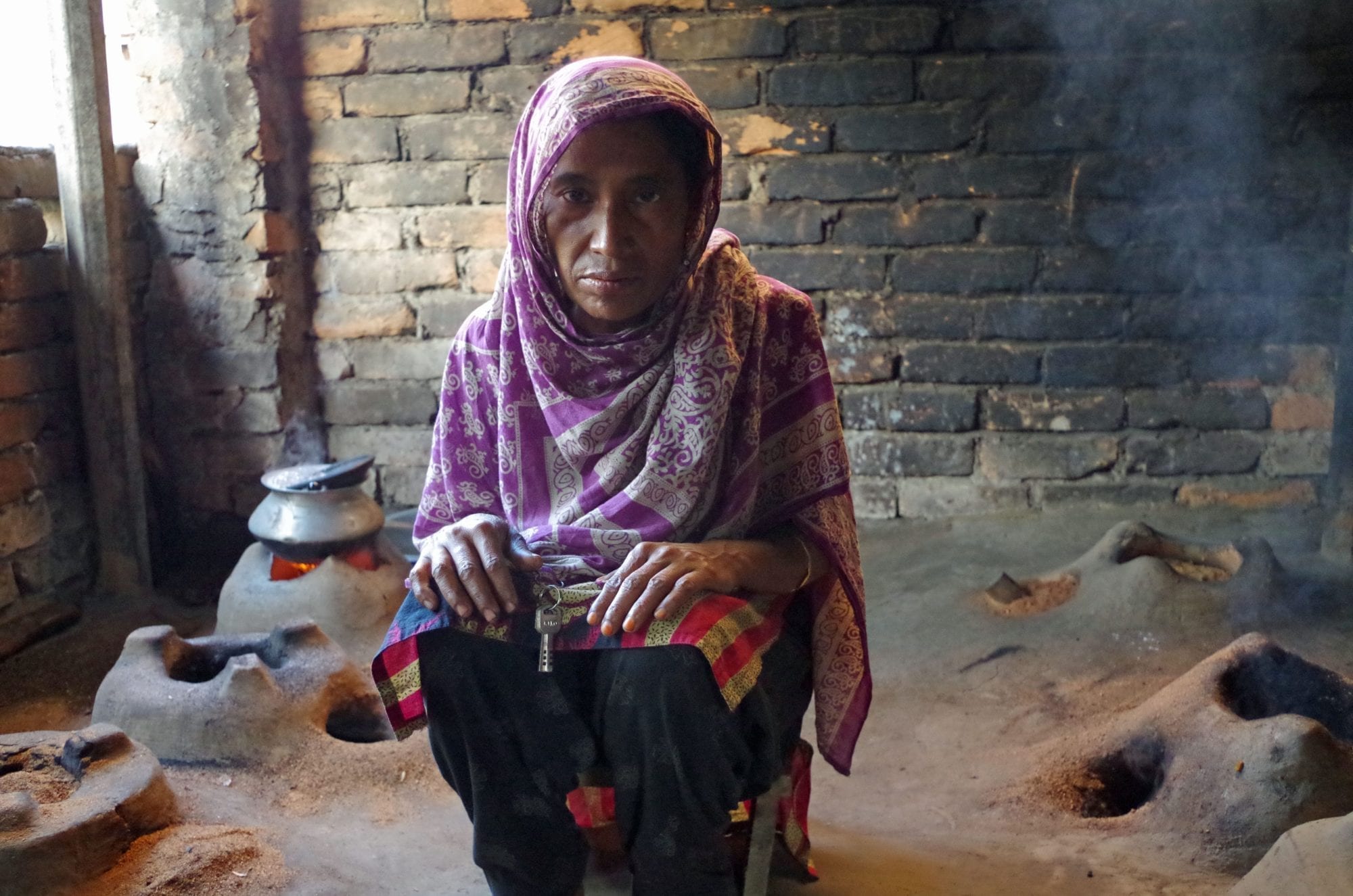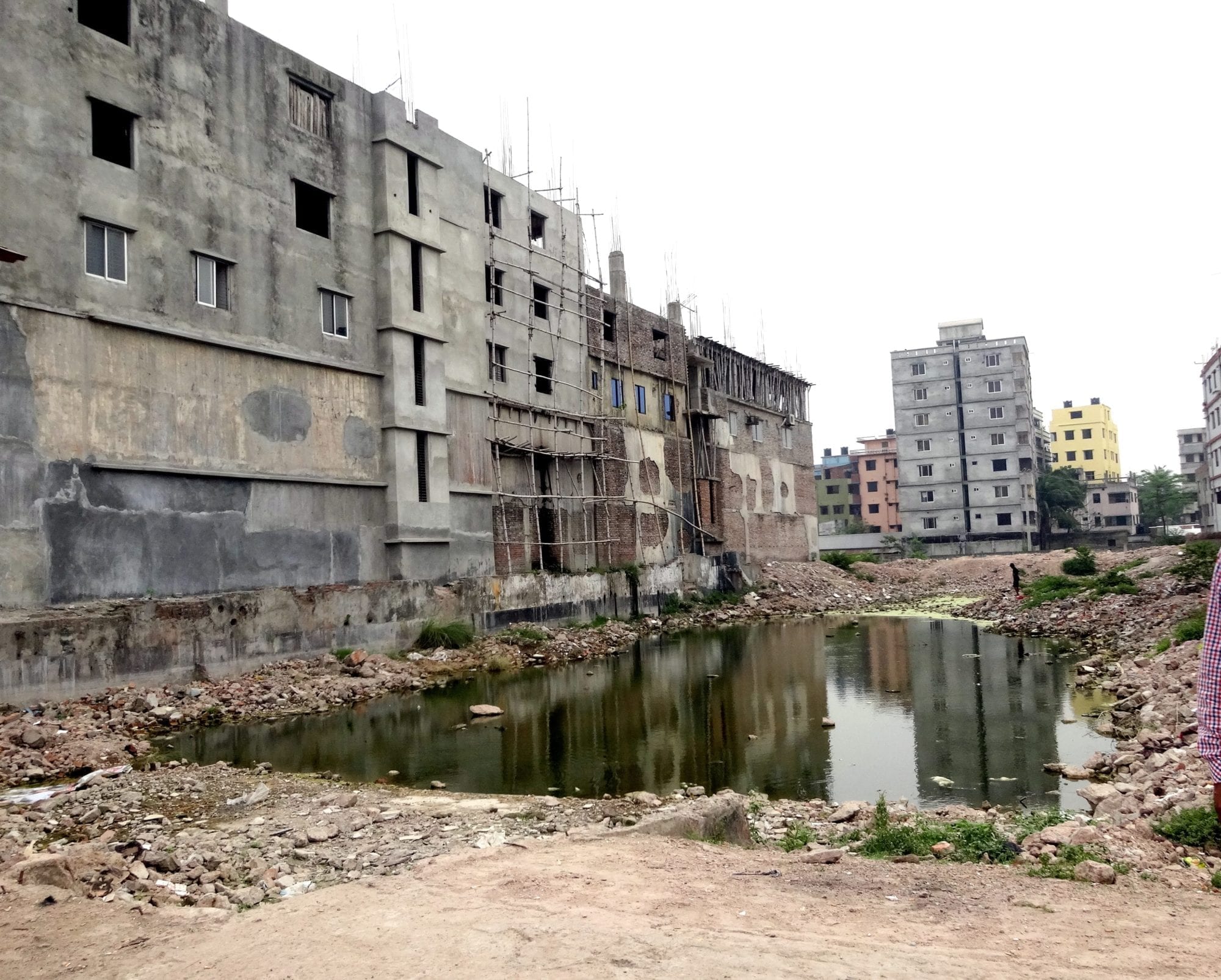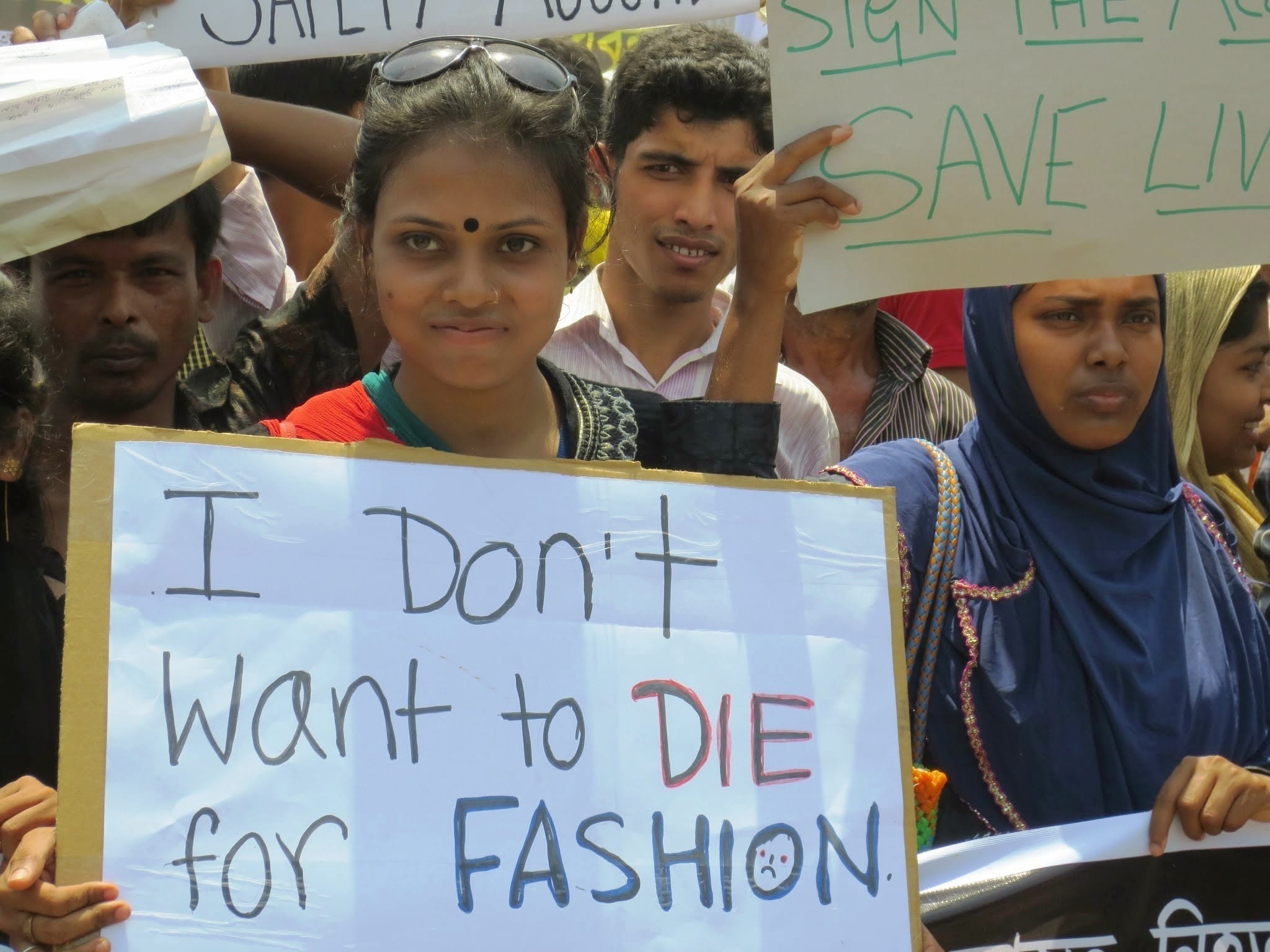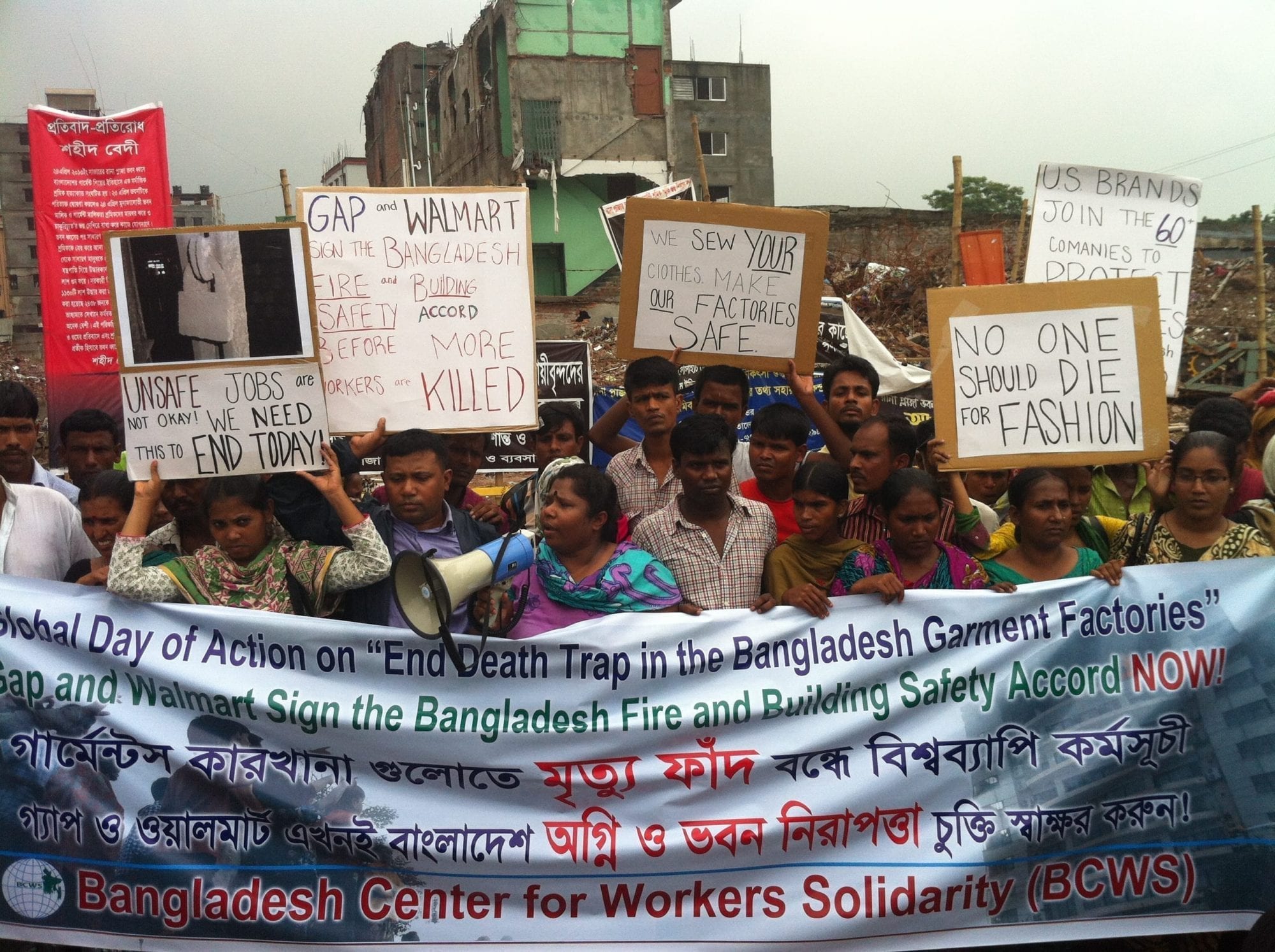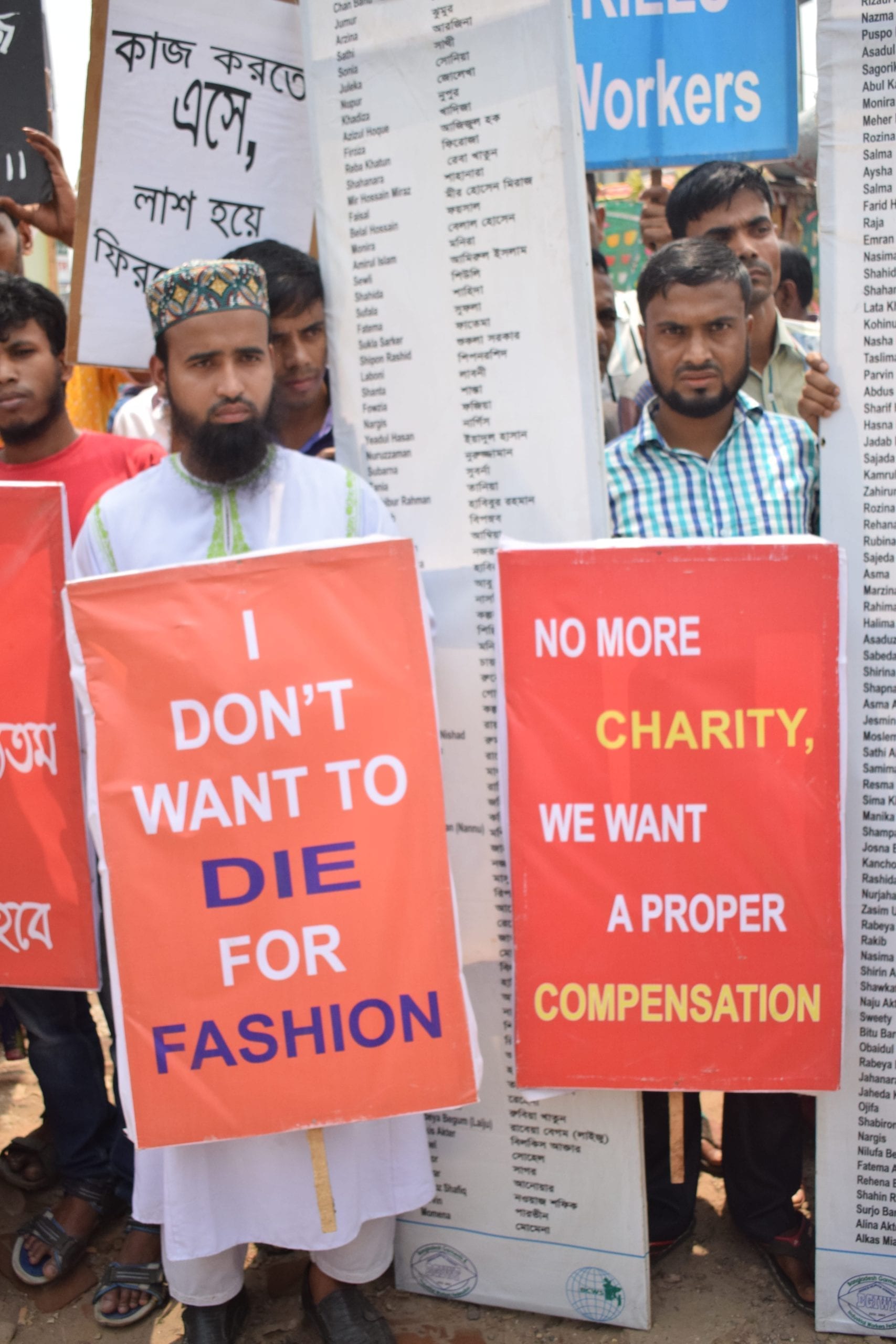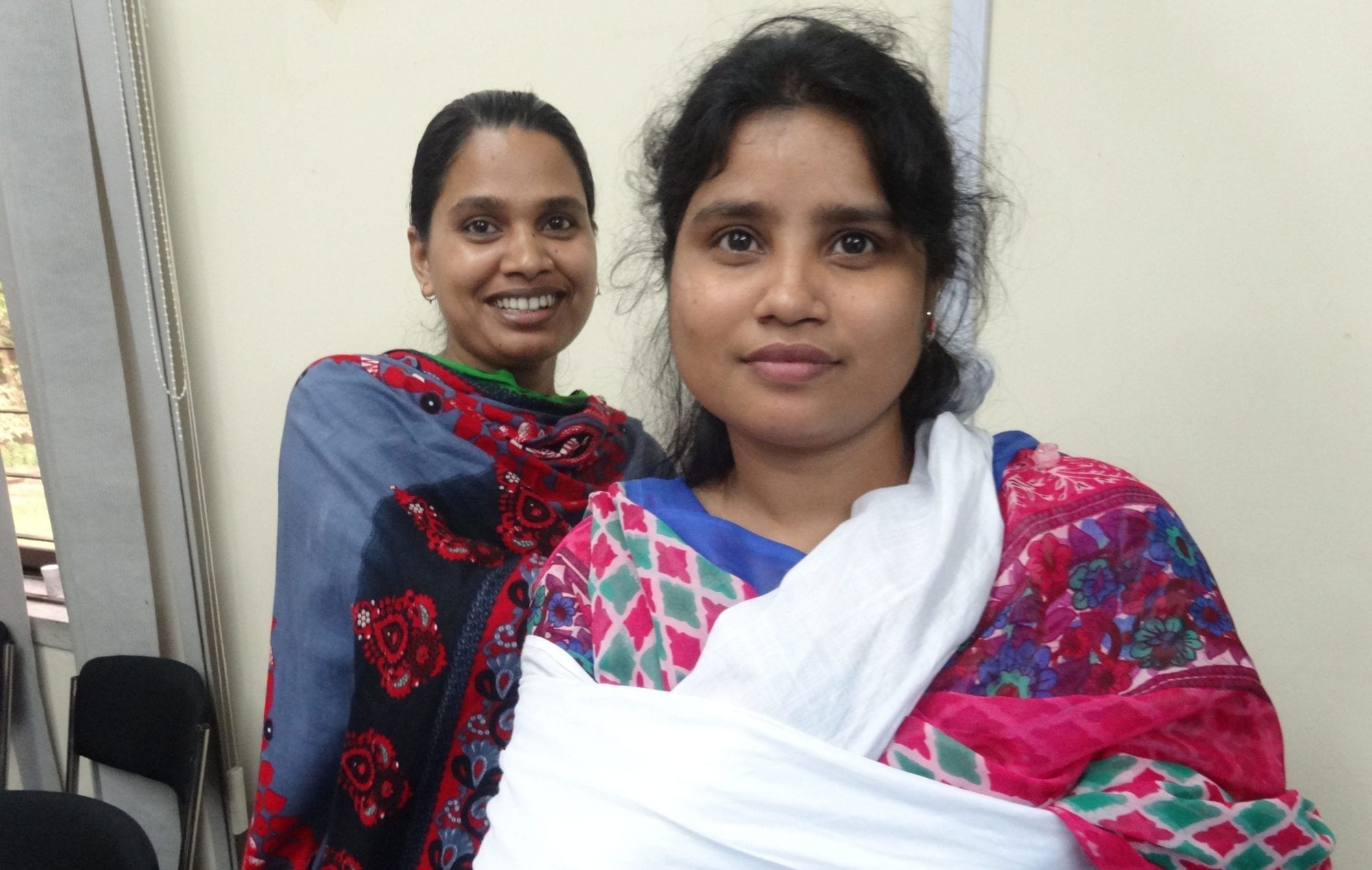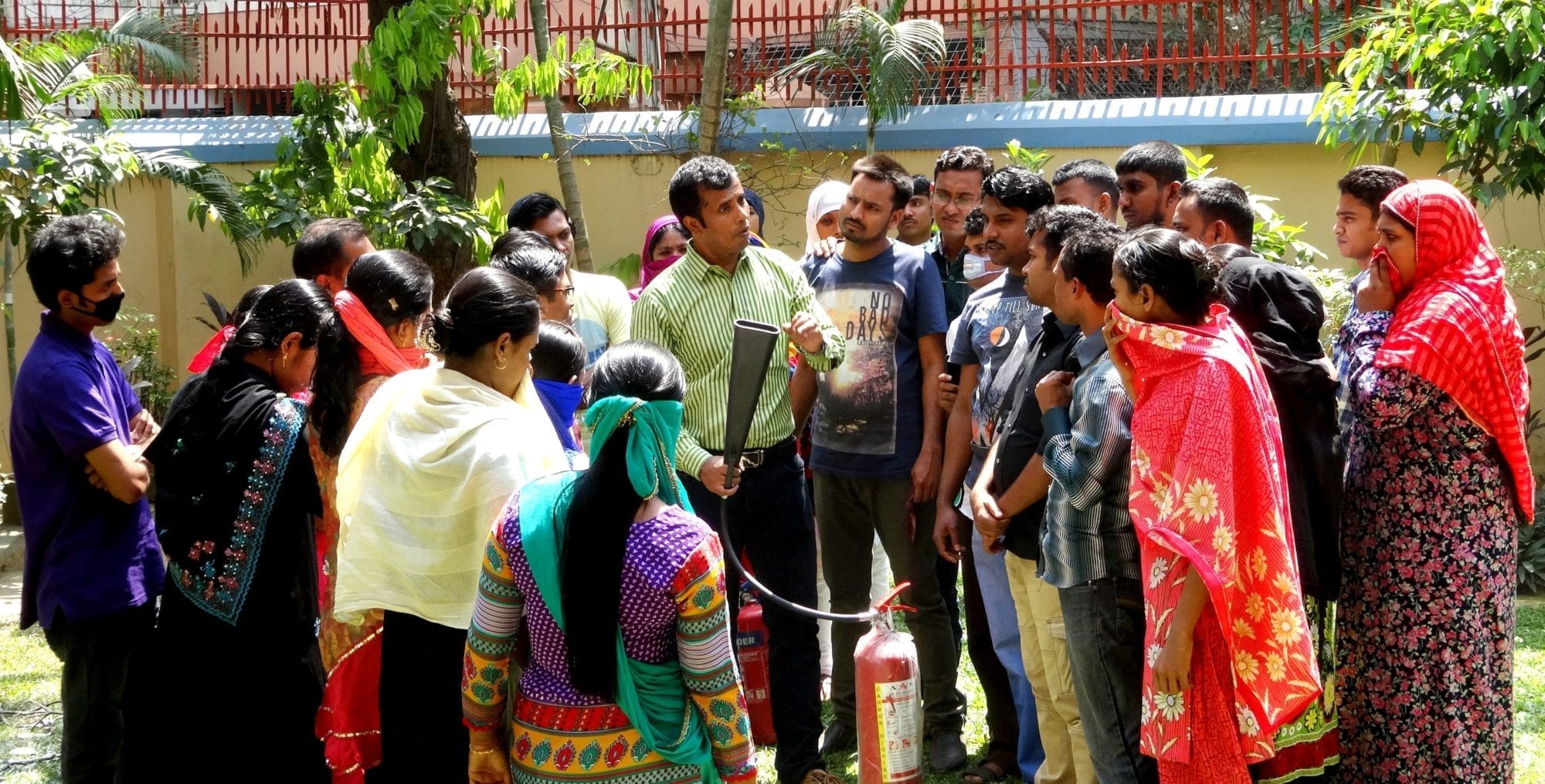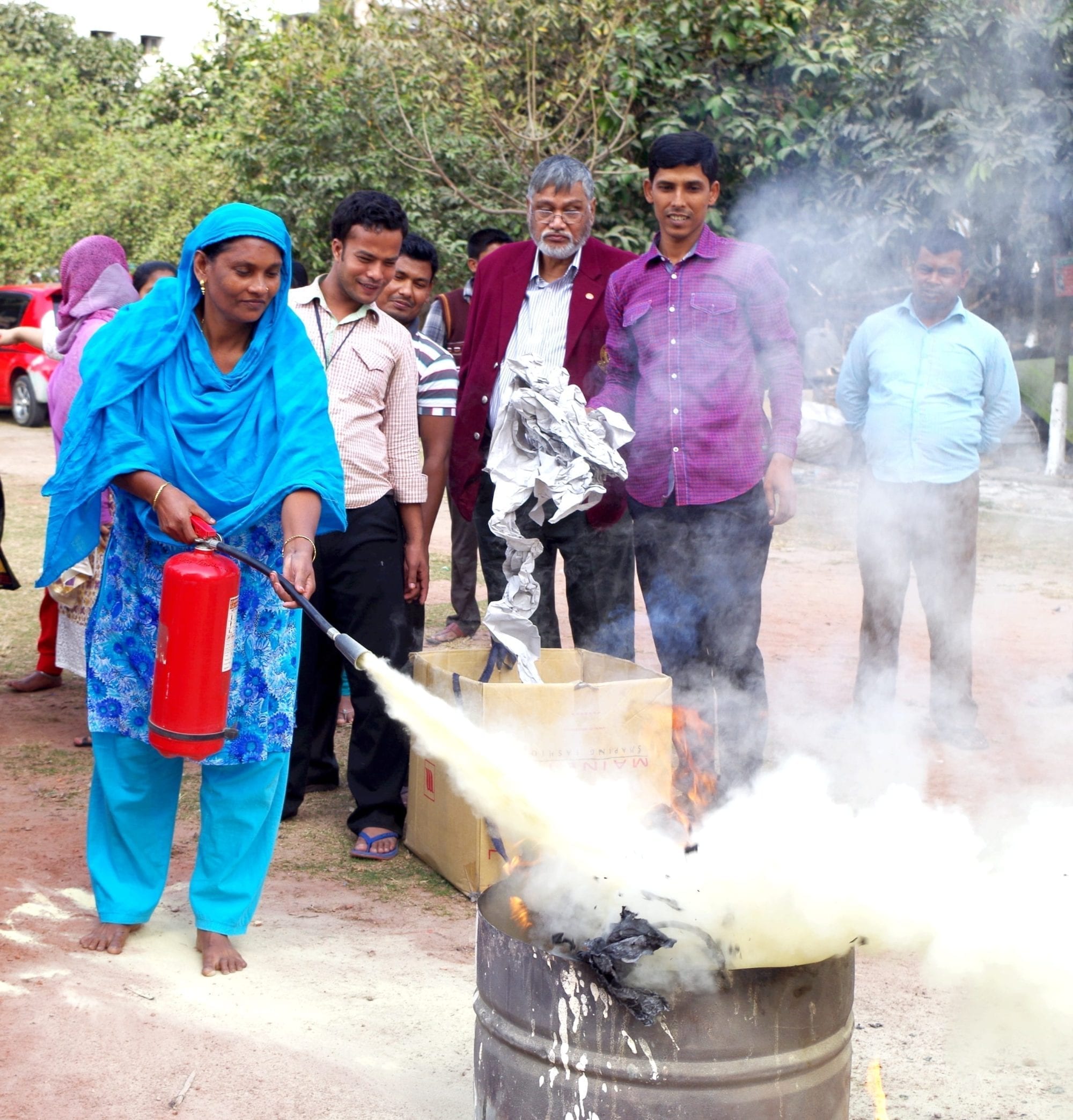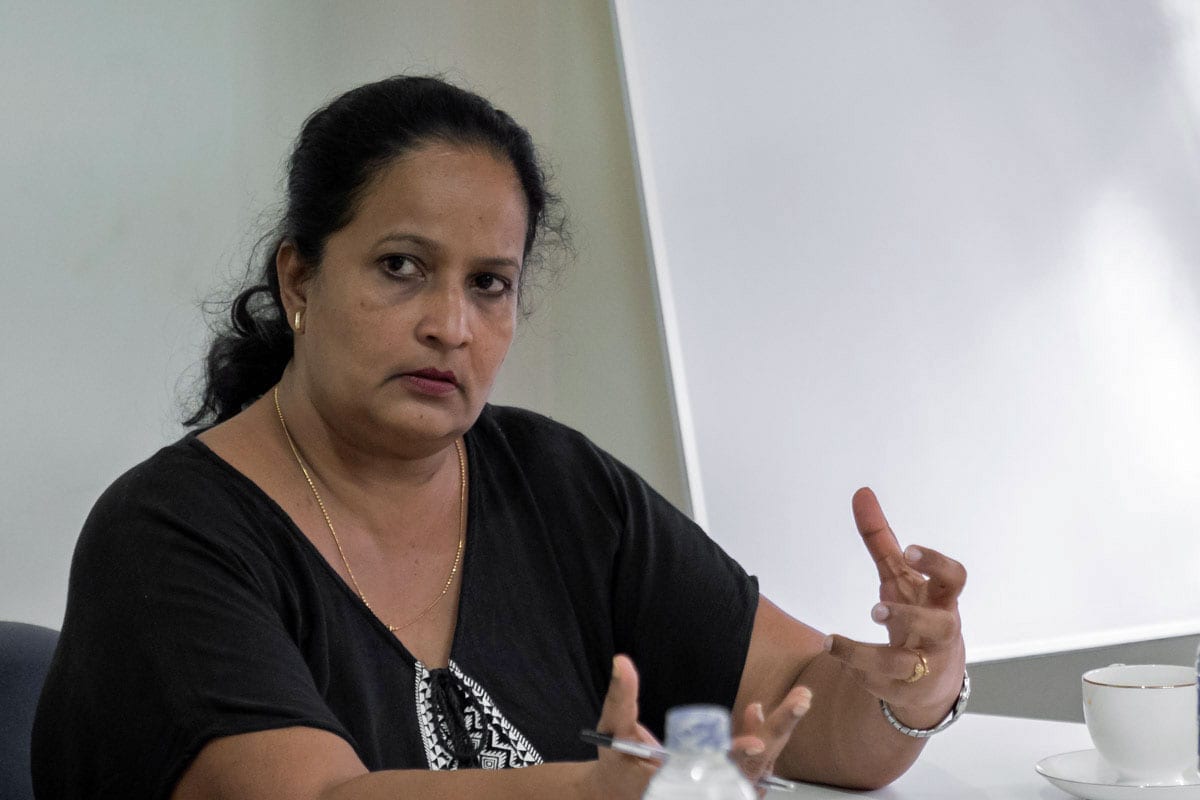
Jan 22, 2019
Just outside Sri Lanka’s Bandaranaike International Airport, where more than 2 million tourists start their vacations each year, a different reality unfolds in the Katunayake export processing zone (EPZ).
There, thousands of garment workers take their places in factories guarded by electrified fencing to begin long days for little pay, forced to endure grueling production cycles with managers refusing to grant even unpaid sick leave. Sexual harassment and other forms of gender-based violence are a daily part of the job, they say, often with economic repercussions.
“Women are made to stand and work and when engineers fix machines, they touch the women,” says PK Chamila Thushari, program coordinator for the Dabindu Collective union. “When they complain, engineers don’t fix the machines, which means they can’t meet their quota. The only they way they can earn a good living is to hit the targets set by the bonus,” she says, speaking through a translator.
Garment workers are paid a bare $84 a month—or less, if they are employed outside the EPZs—yet apparel exports generated $4.8 billion for Sri Lanka in 2017, a 3 percent increase compared with the previous year. At 47 percent of total exports in 2016, apparel and textiles are the backbone of the country’s trade.
Yet only 2.8 percent of the revenue comes to the garment workers who cut, sew and package clothes for international brands, says Thushari, and most are malnourished, suffer from anemia, and struggle to feed and educate their children. The cost of living for a family of four—without rent—is $549 a month in urban areas like Colombo, near the Katunayake EPZ.
Workers Fear Reporting Gender-Based Violence at Work
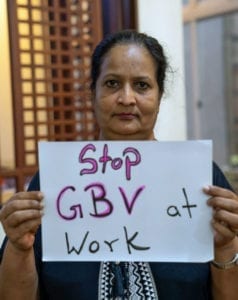
Gender-based violence in garment factories is so common “people have kind of become numb to it.” Credit: Solidarity Center/Sean Stephens
Dabindu (drops of sweat in Sinhalese), launched in 1984 as a local organization to advocate and promote women workers’ rights, transitioned to become a union last year at the request of its members, says Thushari, who has been with the organization for 22 years. In addition to advocating for improved wages, the union is focused on educating women about their rights to a workplace free of gender-based violence.
As is the case at workplaces around the world, Dabindu has found one of the biggest hurdles to addressing sexual harassment and other forms of gender-based violence is women’s fear of reporting it.
Also, “because this happens so often in garment factories, people have kind of become numb to it,” says Thushari. Dabindu creates awareness programs and trains workers to become leaders on the issue. Because workers are fearful of speaking to employers or the police about abusive incidents, the worker-leaders share their experiences with the union, which takes the information to factory management, multinational brands and others so they may address the problem.
Importantly, it took time for Dabindu to develop trust among the workers so they would feel comfortable sharing their experiences with the union, says Thushari.
Connecting Garment Workers Across the Country
Since the end of the country’s 26-year civil war in 2009, which claimed roughly 100,000 lives, Tamil women, many widowed, have journeyed from the north for employment in garment factories at Katunayake and other southern areas with Sinhala majorities. Many experience difficulties because they do not understand the language, and garment factories often require Tamil women to meet higher targets, says Thushari.
Dabindu is working to foster better understanding between the Sinhala and Tamil garment workers by holding daylong “youth camps,” bringing the women together in a relaxed setting, and also is sponsoring trips for garment workers to war-torn northern Sri Lanka to enable women see the difficult living conditions there that are driving Tamil women to seek employment far from their homes. The union is expanding its program to offer women in the north a chance to travel to the south.
“Sometimes, workers are in tears when they see the difficult living conditions, and that brings them closer to each other,” says Thushari.
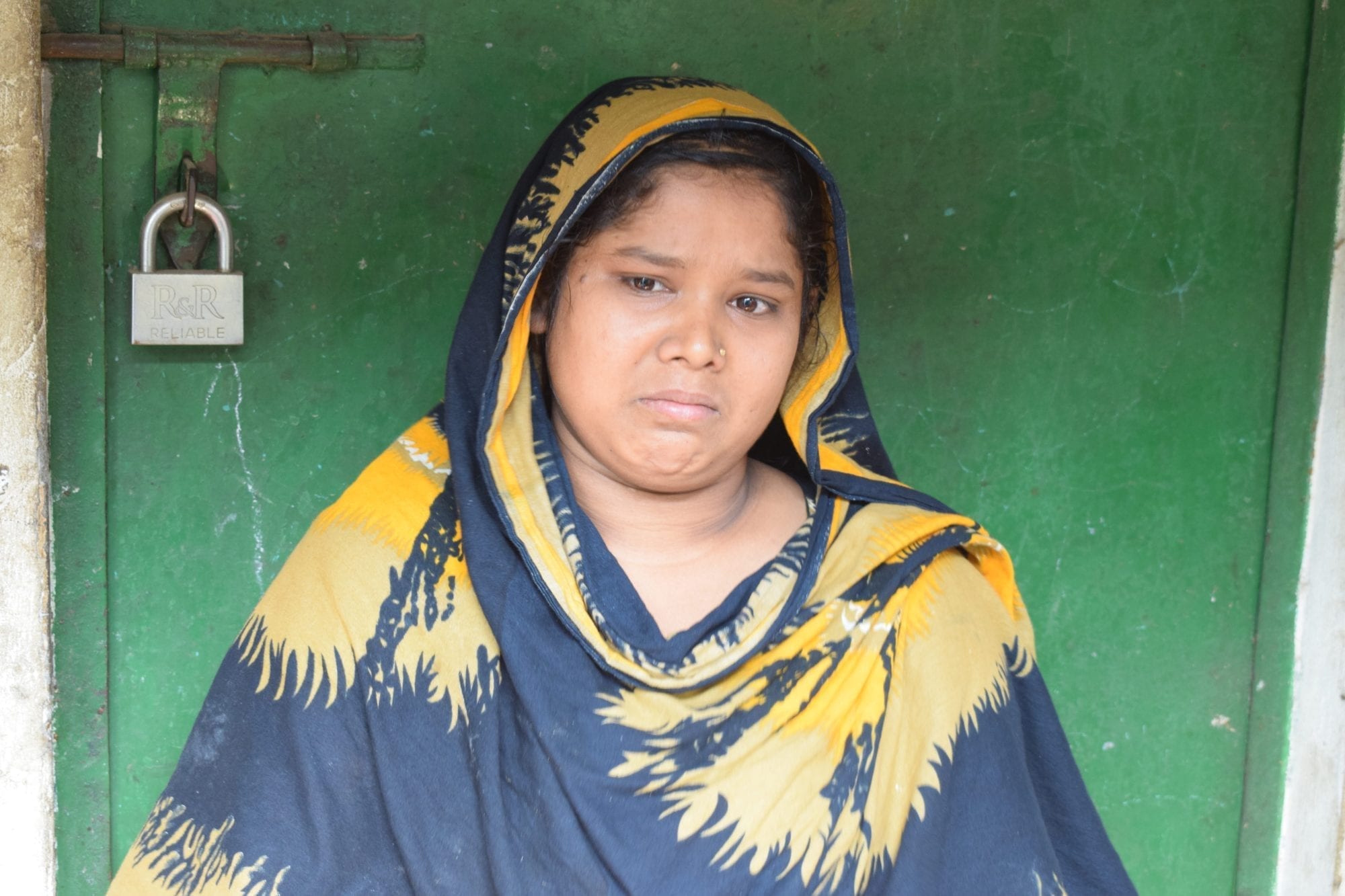
Apr 15, 2018
Following the Rana Plaza collapse in which 1,134 garment workers were killed and thousands more injured in Bangladesh, the horror of the incident spurred international action and resulted in significant safety improvements in many of the country’s 3,000 garment factories.
But five years after the April 24, 2013, disaster, Bangladesh garment worker-organizers say employers often are not following through to ensure worksites remain safe, and the government is doing little to ensure garment workers have the freedom to form unions to achieve safe working conditions. Since the Tazreen Factory fire that killed 112 garment workers in 2012, some 1,303 garment workers have been killed and 3,875 injured in fire-related incidents, according to Solidarity Center data.
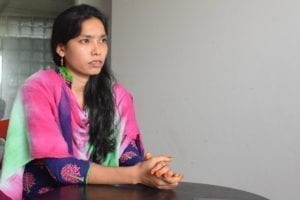
“Five years after the tragedy, the police and local leaders are supporting the factory owners and harassing us”—Tomiza, worker-organizer. Credit: Solidarity Center/Mugfiq Tajwar
“Pressure from the buyers and international organizations forced many changes, says Tomiza Sultana, a garment worker-organizer with the Bangladesh Independent Garment Workers Union Federation (BIGUF), among them less interference by police and factory management. “ We organized trade unions, recorded complaints and trained many workers.
“But five years after the tragedy, the police and local leaders are supporting the factory owners and harassing us and anyone who wishes to come to us. They have forgotten the lessons of the disaster,” she says.
A Disaster that ‘Cannot Be Described in Words’
“I can vividly recall that day. I can still see the faces of families who were looking for the bodies of their loved ones by only holding their photo ID,” says Nomita Nath, BIGUF president. “This disaster cannot be described in words.” The multistory Rana Plaza building, which housed five garment factories outside Dhaka, pancaked from structural defects that had been identified the day before, prompting building engineers to urge the building be closed. Garment workers who survived the collapse say factory managers threatened their jobs if they did not return to work.
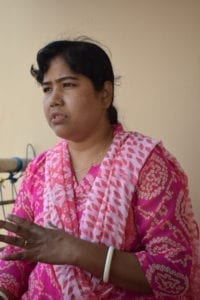
Factory owners did not care about our lives. They only cared about meeting production targets—BIGUF President Nomita Nath. Credit: Solidarity Center/Mugfiq Tajwar
Ziasmin Sultana, a garment worker who survived the collapse, recalls managers telling workers on the morning of April 24 the building was safe even though “the previous day, we had seen cracks [in the building] form right in front of our eyes.” Shortly after starting work, the electricity went out and the building began to violently shake.
After packing into a crowded stairwell to escape, Ziasmin says she found herself falling. “Everything happened in an instant and it was dark everywhere. When I came to my senses, I realized that three of us have survived and everyone else around us was dead.”
“The world saw how much our lives meant to the owners of these factories,” says Nomita. “They did not care about our lives. They only cared about meeting production targets.”
In the wake of Rana Plaza, which occurred months after a deadly factory fire at Tazreen Fashions killed 112 mostly female garment workers, global outrage spurred several international efforts to prevent deaths and injuries due to fire or structural failures. Safety measures were instituted at more than 1,600 factories.
Hundreds of brands and companies signed the five-year, binding Bangladesh Accord on Building and Fire Safety which mandated that brands and the companies they source from fix building and fire hazards and include workers in the process. Many of the signatories recently have signed on to the renewed three-year agreement that takes effect in May. Extending the Accord guarantees that hundreds of additional factories will be inspected and renovated.
Workers Still Struggle to Achieve Safe Workplaces
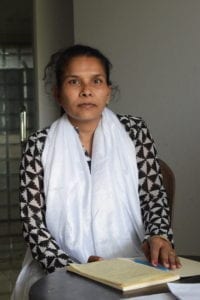
Maintaining the safety gains made after Rana Plaza is “a big task,” says Khadiza Akhter. Credit: Solidarity Center/Mugfiq Tajwar
In a recent series of Solidarity Center interviews, garment worker-organizers from several national unions applaud the significant safety improvements but warn that employers are backsliding. And workers seeking to improve safety in their factories often face employer intimidation, threats, physical violence, loss of jobs and government-imposed barriers to union registration.
“The Accord contributed to ensuring the safety of the factories, but there is a lot of other work that needs to be done,” says Khadiza Akhter, vice president of the Sommilito Garments Sramik Federation (SGSF). She and others interviewed say factories are not regularly inspected, employers do not ensure fire extinguishers and other safety equipment are properly maintained, and safety committees sometimes only exist on paper.
“We are now working in this area for maintaining the standard of fire safety. This is a big task in coming future,” Khadiza says.
The Solidarity Center, which over the past two decades in Bangladesh jump-started the process to end child labor in garment factories and served as a catalyst in the resurgence of workers forming unions, in recent years has trained more than 6,000 union leaders and workers in fire safety. Factory-floor–level workers learn to monitor for hazardous working conditions and are empowered to demand that safety violations be corrected. Many workers, in turn, share their knowledge with their co-workers.
Bangladesh at a Crossroads
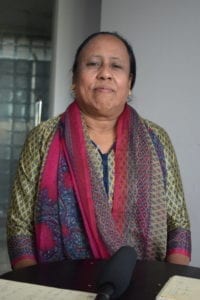
Garment workers can barely survive with such low wages—Momotaz Begum, worker-organizer. Solidarity Center/Mugfiq Tajwar
Accounting for 81 percent of the country’s total export earnings, Bangladesh’s ready-made garment industry is the country’s biggest export earner. Yet wages are the lowest among major garment-manufacturing nations, while the cost of living in Dhaka is equivalent to that of Luxembourg and Montreal.
“The workers can barely survive with such low wages, as their house rents and even food prices have risen,” says Momotaz Begum, who has worked as a garment worker organizer with the Awaj Foundation since 2008.
Without a union, garment workers often are harassed or fired when they ask their employer to fix workplace hazards or seek living wages. Worker advocates say Bangladesh is at a crossroads—and they hope the government and employers choose a future in which Bangladesh workers are partners in the country’s economic success and treated with the dignity and respect they deserve.
But even in the face of severe employer harassment and government indifference, worker-organizers like Khadiza, Momotaz, Tomiza and Nomita, all of whom began working in garment factories as children or young teens, are helping workers join together and insist on their rights at work. Today, 445 factories with more than 216,000 workers have unions to represent their interests and protect their rights.
“I believe that the workers must be aware of their rights and they must be united to achieve them,” says Shamima Akhter, an organizer with the Bangladesh Garment and Industrial Workers’ Federation (BGIWF). “We train them to let them know what they deserve, and we empower them so that they can claim their rights from the factory owners.”
In Bangladesh, the Solidarity Center implements the Workers Empowerment Program – Components 1 and 2, which provides training and rights education to garment workers and organizers, with the support of USAID.
Iztiak, an intern in the Solidarity Center Bangladesh office, conducted the interviews in Dhaka.



